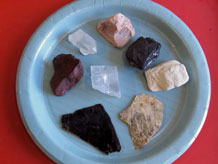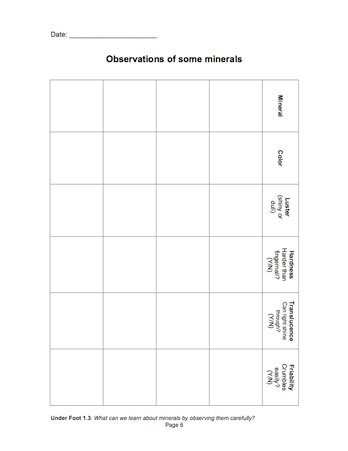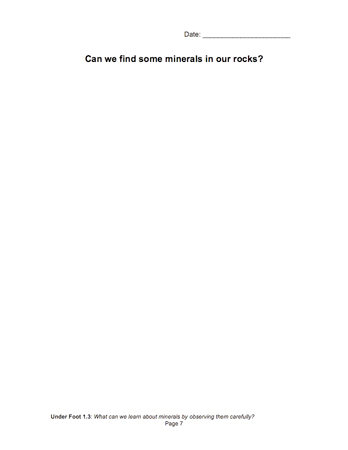What can we learn about minerals by observing them carefully?
Plan Investigation 1.3

Minerals in my toothpaste ... in my pencil ... in my salt shaker — and in rocks? Yes. Scientists have identified thousands of minerals, and they show up everywhere in our lives.
Formative Assessment
Available online at inquiryproject.terc.edu
Students begin by investigating eight minerals, considering some of their properties and sharing their observations. They then return to the four rocks they studied in the last investigation to see if they can identify any minerals in them.
By the end of this investigation students will understand that minerals have specific and observable or testable properties. Students will have a clearer understanding of the difference between rocks (objects) and minerals (materials). They will also begin to appreciate the composite nature of many earth materials.
Learning Goals
- Become familiar with the common properties of minerals
- Understand the difference between rocks (objects) and minerals (the materials that rocks are made of)
| Sequence of experiences | ||
|---|---|---|
| 1. Ask the question | All Class | 5 Mins |
| 2. Explore the minerals | Small Groups | 15 Mins |
| 3. Share the data | All Class | 10 Mins |
| 4. Make meaning | Discussion | 15 Mins |
Materials and Preparation
For the class:- Post the investigation question in a place where all students can see it.
- Prepare a large–size class table, 8 rows by 5 columns, for recording mineral properties; pattern it on the table in the students’ notebooks titled "Observations of some minerals."
- (optional) Copy the notebook page titled "Some properties of 8 minerals" onto a whiteboard or a large sheet of paper; this is where you will make histograms of the class data.

For each tray:
- 1 plate of 8 mineral samples: quartz, mica, biotite, feldspar, halite, hematite, talc, and graphite; this set of minerals will be used again in the next investigation
- 1 plate of 4 rocks: sandstone, granite, conglomerate, and basalt; this set of rocks was also used in the last investigation
- 2 Mineral Reference sheets
- 4 magnifying glasses
- 4 paper towels
Can students use their observations of properties of minerals as evidence that a mineral is present in a rock?
In their wrap up of an investigation of minerals, students search for familiar minerals in a small collection of rocks.
As they make claims, you’ll find evidence of their ability to use the properties of minerals the class observed (such as color, luster, translucence, hardness, friability) as evidence to support a claim.
As you interpret a student’s statement, assess the strength of the evidence the student chooses.
- Strong: I think quartz is in granite because I see grains that are shiny, translucent, hard.
- Weak: I think graphite is in granite because I see a grain that is black. The student does not take other properties of graphite into consideration such as leaving black marks on the fingers when rubbed.
After a student makes a claim, a next step might be to ask the class to take a stand on the strength of the evidence that supports the claim.










